Always dreamt of growing your own organic edibles? This beginner’s guide to creating a Vegan Garden will get you started right away!
Stay true to your vegan lifestyle with your own homegrown produce! This guide will teach you the basics of vegan gardening, using all-natural methods to get organic and delicious harvest. Let’s get our hands dirty!
Why Choose Vegan Gardening?
First of all, what is vegan gardening? It’s the practice of growing plants without using animal inputs or synthetic chemicals. Simply put, it is growing natural products naturally. This form of gardening also avoids the exploitation of animals and helps reduce greenhouse gas emissions.
A farmer interview revealed that vegan farming motivated them with aspects of food safety, sustainability, and improved soil and plant health. And there’s your answer!
How to Start a Vegan Garden
1. Start With A Modest Setup
Don’t worry; you don’t need a huge space to create a vegan garden! Start small and focus on the joy of growing your own delicious fruits and veggies. Even a simple setup can bring you tons of satisfaction. To make things easy, begin with plants that are suitable for your climate or naturally grow in your area–these are called “endemic” plants.
Here are a few good ones you can start with:
- Herbs like basil, mint, parsley, and chives–they’re beginner-friendly and can thrive in small pots or containers.
- Lettuce, spinach, and other leafy greens are fast growers and perfect for small spaces and window boxes.
- Sweet tomatoes, peppers, and other low-maintenance plants. Plus, you can grow some of their edible companions as well.
- Radishes, green onions, scallions, and compact cucumber varieties are well-suited for container gardening and perfect for fresh salads and pickling.
2. Use Vegan Potting Soil
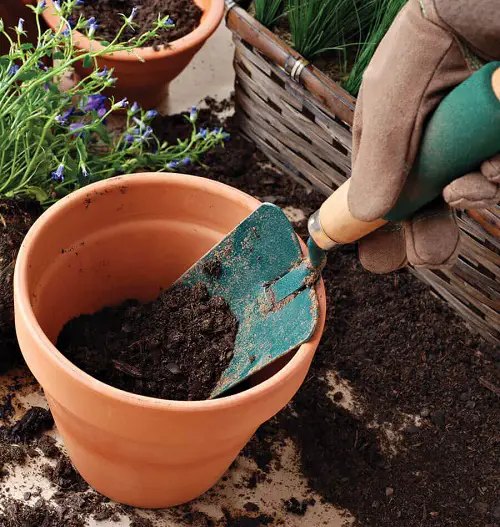
Once you know the plants you want to grow, it’s time to pick the soil. Choose vegan potting soil, particularly one made with renewable resources.
Coconut coir, made from coconut husks, is a great choice for soil amendment. It’s naturally lightweight and holds moisture well. Organic compost is another great vegan option that is packed with nutrients to help your plants flourish. These eco-friendly choices are good for your garden and the planet.
3. Organic Seeds or Seedlings
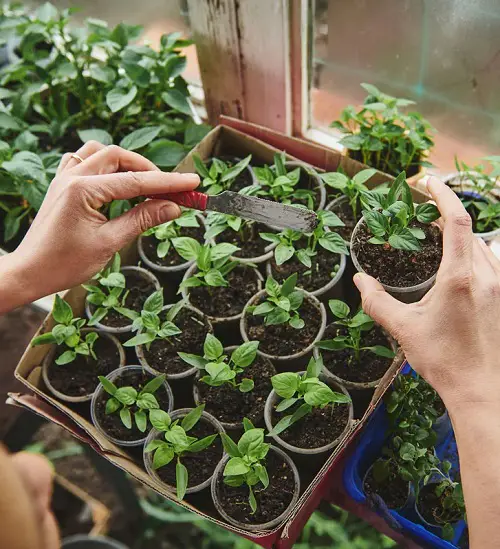
Now, when we say organic, we mean non-GMO varieties that can be cultivated without using synthetic commercial pesticides, herbicides, or fertilizers. Apply neem oil, insecticidal soaps, and vinegar to get rid of pests. Feed with natural fertilizers, compost, seaweed, and kelp meal.
Just visit your local garden center or nursery. They’ll help you choose the right varieties for your area. Local gardening communities and online organic retailers are also good sources of information for finding the best heirloom varieties.
4. Choose a Vegan Compost
If you’re going for a full vegan garden, you’ll definitely need vegan compost.
Chemical fertilizers might be convenient, but they alter the pH of the soil and can often be detrimental to natural ecosystems. On the other hand, fertilizers like manure are animal by-products and, therefore, not vegan.
So which ones do you choose? Plant-based products! Like hay and mulch. Here’s a quick recipe to make your own vegan compost.
Here’s What You Need
- Brown material – dry leaves, straws, branches, and twigs from the outdoors.
- Green material – kitchen scraps, such as fruit and vegetable peels, coffee grounds, and plant-based food waste.
- Water – to maintain proper moisture levels in your compost pile.
Steps to Follow
Once you have these ready, take a container and add your brown and green material in a 2:1 ratio. Add water to moisten the pile; it should be soggy but not dripping wet. Then, leave it for a few weeks. With a pitchfork, turn the material every now and then–to circulate air and speed up the decomposition.
In a couple of weeks, it will start looking dark and crumbly and start giving off an earthy smell. That’s your cue to dilute it and use it.
5. Go for Companion Planting
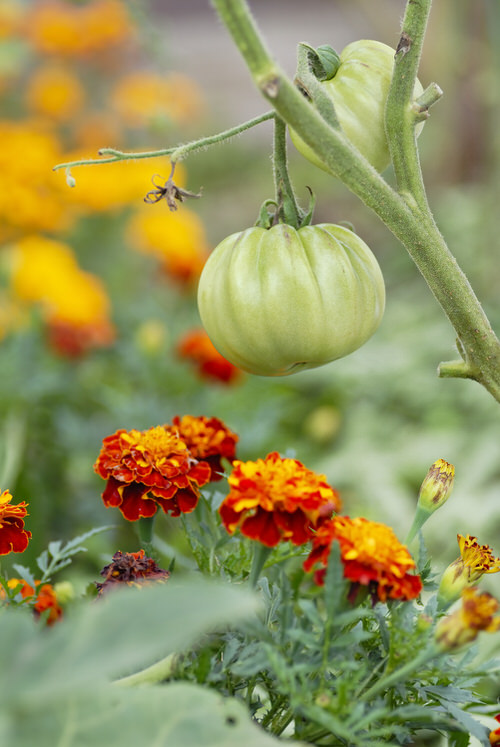
Now comes the fun part–planting your veggies. The goal is to get the best harvest by doing little work, right? So go with companion planting.
Companion planting allows your plants to collaborate, helping them grow, keeping unwanted pests away, and attracting helpful pollinators. You can learn more about it here.
When doing all this, don’t miss growing flowers that grow well with vegetables, some of them are even edible as shared in our list.
6. Pay Attention to the Watering Needs
Keeping your vegan garden healthy means giving your plants the right amount of water.
Different plants have different needs based on your climate, the type of soil you’re using, and even the specific variety of the plant itself. Some will thrive with consistent moisture, while others prefer to dry out a bit between waterings. Apart from modern irrigation systems like soaker hoses and drip irrigation, spreading a layer of organic mulch to reduce evaporation works just as well.
Here’s a vegan bonus tip: Collect rainwater in barrels! Plants love the chlorine-free hydration that rainwater provides.
7. Do Not Kill Beneficial Insects
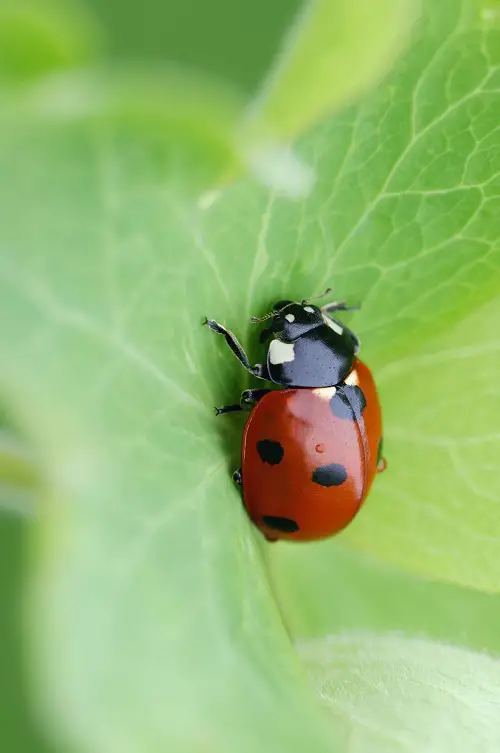
Let’s talk about bugs. Not all bugs are villains! In fact, tiny predators like ladybugs and lacewings help combat aphids, mites, and other pesky pests.
You should grow a couple of bug-repellant plants like marigolds, peppermint, and lemongrass. They keep pests away and also attract beneficial insects to your vegan garden.
8. Invite Pollinators
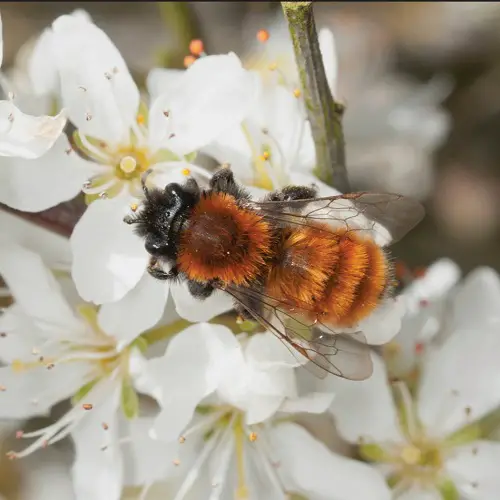
Going vegan is all about creating a natural ecosystem full of pollinators and healthy plants. To support beneficial insects like bees, butterflies, and hummingbirds, you can choose native flowering plants in your vegan garden. Especially the ones that provide nectar and pollen sources for the entire year.
Different colors of flowers also help attract various pollinators. For example, blue, purple, and yellow attract bees and butterflies, while red and orange hues are adored by hummingbirds. So, adding diversity will help! You should invite these pollinators to have a productive vegan garden.
With this little guide, you’re all set to start your own vegan garden right in your backyard. Don’t forget to share your experiences in the comments section below! Happy vegan gardening!




Nice